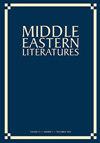Ghādat al-Ṣīn: the literary trace of Arab–China relations in the Nahda
IF 0.2
4区 文学
0 LITERATURE
引用次数: 1
Abstract
ABSTRACT In the late nineteenth century, Nahdawi writers increasingly turned their attention to China. This article explores the political and literary function representations of China served in Nahdawi discourse by examining Ṣāliḥ Jawdat’s 1889 Ghādat al-Ṣīn. By illustrating the triangular circuit of textual exchange through which Chinese cultural material entered Arab consciousness mediated by European translation, I demonstrate the political agency acquired by Nahdawi translators who modified and reappropriated the Orientalist strategies of power in European writing about China. Jawdat repurposes the European representation of Chinese men as incapable of self-rule, using these depictions of deficient East Asian masculinity to create a narrative space for female empowerment. What becomes apparent is that the key issues of the Nahda such as free marriage and women’s access to the public sphere took shape along axis of South-South relations.Ghādat al-Ṣīn:复兴党中阿中关系的文学痕迹
19世纪后期,纳达派作家越来越多地将注意力转向中国。本文通过考察Ṣāliḥ Jawdat 1889年的作品Ghādat al-Ṣīn,探讨中国在纳达维话语中的政治和文学功能。通过阐释文本交换的三角电路,中国文化材料在欧洲翻译的调解下进入阿拉伯人的意识,我展示了纳达维派译者在欧洲关于中国的写作中修改和重新利用了东方主义的权力策略,从而获得了政治代理。乔达重新诠释了欧洲对中国男性无能自治的描述,利用这些对缺乏东亚男子气概的描绘,为女性赋权创造了一个叙事空间。显而易见的是,复兴党的关键问题,如自由婚姻和妇女进入公共领域的机会,是沿着南南关系的轴线形成的。
本文章由计算机程序翻译,如有差异,请以英文原文为准。
求助全文
约1分钟内获得全文
求助全文

 求助内容:
求助内容: 应助结果提醒方式:
应助结果提醒方式:


